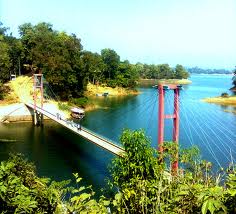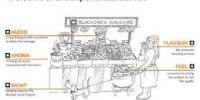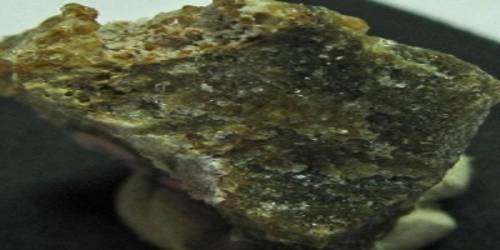Introduction:
The Capital of Bangladesh is Dhaka with its exciting history and rich culture. Know the world over as the city of mosques and Muslim, it has attracted travelers from far and near through ages. However, according to recorded history it was founded in 1608A.D. As the seat of the imperial Mughal Victory of Bengal. Dhaka was the Capital of Bangladesh has grown into a busy city of about ten million people with an area of about 1353 sq. km. Having a happy blending of old and new architectural trends. Dhaka has been developing fast as a modern city and is throbbing with activities in all spheres of life. It is the Center of industrial, Commercial, Cultural, educational and political activities for Bangladesh. Motijeel is the main Commercial area of the city.
Some of the outstanding tourist attractions of Dhaka:
Mosques
Dhaka has several hundred mosques. Prominent is the Seven Domed Mosques (17th century). Baitul Mukarram – National Mosque, Star Mosque (18th century), Chalkboard Mosque and Huseni Dalan Mosque.
Lalbagh Fort
it was built in 1678 A.D. by Prince Mohammad Azam. Son of Mughal emperor Aurangazab. The fort was the scene of bloody battle during the first war of independence (1857 A.D.) When 260 sepoys stationed here backed by the people revolted against British forces. Outstanding among the monuments of the Lalbagh are the tomp of Pari Bibi, lalbagh Mosque, Audience Hall and Hammam of Nawab Shaista Khan now housing a museum.
Central Shahid Minar
Symbol of Bengali Nationalism, this monument was build to commemorate the martyrs of the Historic Language Movement of 1952. Hundreds and thousands of people with floral wreaths and bouquets gather Eternal Flame to enliven the memory of the martyrs of our liberation War blown here recently.
National Memorial
Located at saver, 35 km. from Dhaka City. The memorial designed by architect Moinul Hossain, is dedicated to the sacred memory of the millions of unknown martyrs of the 1971 War of Liberation.
National Museum
Established as Dhaka Museum in 1913 A>D> It has been renamed as the National Museum and was shifted to its new building at Shah bag in 1983. It is a four storied building and has forty galleries under four departments, namely, (1) Natural History (2) History and classical Art, (3) Ethnography and Decorative art and (4) Contemporary Art and Worlds Civilization. The museum contains large number of interesting collection including sculptures and paintings of the Buddhist, Hindu and Muslim periods. It also has rich collection of old coins, metal images, books on art, ivory and silver filigree works, textiles including the world famous muslin fabric, embroidered quilt (Nakshi Kantha), arms and ammunitions of the bygone warriors, varieties of fine handicrafts and models of the village and town life, Contemporary paintings and sculptures. Above all, the valuable articles of the heroic liberation war of Bangladesh are also there. Open: Saturday-Wednesday, 10.00 a.m.-7.00 p.m. Thursday: Closed. Entrance Fee: Taka. 5.00.
Mukti Juddha Museum
Situated at Segun Bagicha area of the city. The museum contains rare photographs of liberation War and used by the freedom fighters during the period.
Ahsan Manzil Museum
On the bank to the river Buriganga in Dhaka the pink majestic. Ahsan Manzil has been renovated and turned into a museum recently. It is an example of the nation’s rich cultural heritage. It was the home of the Nawab (Ruler) of Dhaka and silent spectator to many events. The renovated Ahsan Manzil is a monument of immense historical beauty. It has 31 rooms with a huge dome atop which can be seen from miles around. It now has 23 galleries displaying portraits, furniture and household articles and utensils used by the Nawabs.
Flock Art Museum
The Flock Art Museum was established in 1975 to fulfill the dream of the celebrated painter Shilpacharya Zainul Abedin. The Museum has a very rich collection of folk objects of different materials and forms of aesthetics and utilitarian values. These undoubtedly reflect the sentiments, impulse, temperament, moods, idiosyncrasy, skill and expertise of the artists. It is a national institution, which represents traditional art, heritage of Bangladesh, exhibiting objects of exceptional design and skill.
Open: Saturday-Wednesday, 9.00 a.m. -5.00 p.m. Closed: Thursday, Friday & Govt. Holidays. Entrance: Free.
Science Museum
Located at Agargaon, the museum is a modern learning center related to the latest scientific discoveries.
National Parliament
Jatiya Sangsad Bhaban (Parliament House) at Sher-e-bangla Nagar, designed by the famous architect Louis I. Khan, has distinctive architectural features. It may be called an architectural wonder of this region.
National Poet’s Graveyard
Revolutionary poet Kazi Nazrul Islam died on the 29 August 1978 and was buried here. The graveyard is adjacent to the Dhaka University Mosque.
Banga Bhaban
the official residence of the President, located in the city. One can have an outside view of this grand place.
Ramna Green
a vast stretch of green garden surrounded by a serpentine lake near the Dhaka Sheraton Hotel.
Baldha Garden
Unique creation of the late Narendra Narayan Roy, the landlord of Baldha Year of establishment was 1904. Located in Wari area of Dhaka City (opposite Christian cemetery), the garden with its rich collection of indigenous and exotic plants is one of the most exciting attractions for naturalists and tourist.
National Botanical Garden
spread over an area of 205 acres of land. It has a collection of nearly 100 species of local foreign plants. Outstanding attractions are 100 varieties of roses in the rose corner, 100 varieties of bamboos in the bamboo grove, varieties of sandalwood and old Banyan tree. Quiet place out of the main city to meet the nature.
National Park
Situated at Bhawal, 40 km. north of Dhaka on Dhaka-Trisal- Mymensingha highway. An ideal spot for visitors, artists, photographers, ornithologists and tourists. A vast (16,000 acres) national recreational forest. Main flora is Gajari (Assam sal) and fauna includes small tigers, leopards. Small bears, monkeys, porcupine, foxes, pythons, lizards and many local birds. A 1000-metre long meandering man-made lake having angling and rowing facilities, the flower gardens inside are added attraction to natural beauty. Mere walking or lazing under the shade of tree is pleasant. 20 picnic sports, 6 rest-house of the forest department with comfortable bed and modern amenities are available inside the national park. Prior permission/booking may be obtained from the Divisional Forest office, Mohakhali, Dhaka.
Sonargaon
About 29 km. from Dhaka, Sonargaon, of 13th century A.D. is one of the oldest capitals of Bengal. A Folk-Arts and Crafts Museum has been established here.
Other attractions in and around Dhaka include the Institute of Arts and Crafts with its representative collection of folk-arts and paintings, handicrafts.
Places of Tourist Attraction-Chittagong
With a picturesque hinterland of large hill forests and lakes Chittagong, the second largest city of Bangladesh and a busy international seaport, is a good vacation spot. Its find harbor, green hills forests and sea beaches and soothing sun shine attract holiday makers to swim in the blue waters of the Bay of Bengal, bask in the sun, fish in the lakes and rivers and shoot with camera in the game filled forests. Described by the Chinese poet Traveer Hiuan Tsang (7th century A.D.) as “a sleeping beauty emerging from mist and water” and given nickname of Porte Grande (Grand Port) by the 16th century Portuguese seafarers, Chittagong remains true to both descriptions even to day. It combines the humming of a restless seaport with the pleasure of a hill town.
Chittagong is the country’s chief port & is the main site for the established of heavy, medium and light industries. Bangladesh’s only steel mill and oil refinery are also located in Chittagong.
Hazrat Sultan Bayezid Bostami
The famous Chilla of Hazrat Sultan Bayezid Bostami is situated on a low hillock at Nasirabad, to the extreme north of the city. He was born in 777 A.D. at Bostan in Iran. He came to Indian and it is said that hevisited Chittagong. There is no mazar of the saint in the shrine. It is an astana and chilla associated with the name of the great saint. A mosque built during the region of Emperor Aurangazeb stands on the bank of a big tank at the foot of the hillock on which the shrine is situated. There are several hundred tortoises in the tank. Tradition has it that these animals are evil spirits (Djinns) who were cast into this shape because they incurred the wrath of the great saint who visited the place about 1.100 years ago.
Hazrat Badar Aulia
The shrine of this illustrious saint is at Boxihat in the Chaittagong town on the badar pati road. There is a great controversy about the identity of Hazrat Badar Aulia. There are serveval places in Bangladesh, which are associated with the name of pir Badar and where either a dargah or a tomp exists. A tradition connects him with the spread of Islam in Chittagong and the people refer to him by different names, such as Badar Alam, Badar Mokam, Badar pir and Badar Aulia.
The Dargah of Hazrat Shah Amanat
The dargah Sharif of Hazrat Shah Sufi Amanat Shah lies to the central jail and east of the Laldighi. He flourished during the later part of the 18th and early part of 19th century. For a pretty long time he concealed his spiritual attainments by serving as a peon in the judge’s Count, Chittagong.
Qadam Mubarak Masjid
This is an old mosque in the Rahmatgonj area of Chittagong. It was built 1336 A.D derives its name from a slab which is said to bear the footprint of the Holy prophet of Islam.
World War ii Cemetery
In a well-preserved cemetery at a quit and picturesque place within the city lie buried in eternal peace over 700 solders from Britain, Australia, Canada, Newzeland, India, Myanmar, East and West Africa, the Netherlands and Japan who laid down their lives on the Burma front during the world war II.
Portuguese Arsenal
Situated on one of Chittagong’s highest hills, the building which now houses the Islamic Intermediate College is no less than 300 years old. The main building was constructed by the Portuguese in the 17th century and used by them as an arsenal. It still has an underground chamber with a tunnel and trap doors.
Foy’s Lake (Pahartali lake)
Set amidst picturesque surroundings in the railway town-ship of Pahartali 8 km. From Chittagong, this is an ideal spot for outing and picnic thronged by thousands of visitors every week.
Marine Academy
Lacated at Julia, the only training institute of its kind in Bangladesh, situated on the mouth of river Karnaphuli. Marine Academy was established on 3rd September 1962, in order to provide adequately for the manning of the merchant-ship of our country, by suitably trained and qualified officers.
Ethnological Museum
this museum located in Agrabad is a treasure-house of a variety of tribal cultures and heritage of Bangladesh. This museum is recognized as one of the best-specialized museums in South East Asia.
Mahamuni
About 24 km. From Chittagong, a hilly village famous for one of the oldest Buddhist temples in the subcontinent.
Sitakund
Chittagong lies an interesting place known as Sitakund, served by a railway station of the same name. Famous among the many temples in this place are the Chandranath Temple and the Buddhist temple. In the vicinity there is an also hot spring. The Buddhist temple has a footprint of Lord Buddha. These places particularly the Hilltops are regarded as very sacred by the Buddhists and the Hindus Siva-Chaturdeshi festival is held every year in February when thousands of pilgrims assemble for the celebrations which last about 10 days. There is a salt-water spring 5 km, to the north of Sitakund known as labanakhya.
Places of Tourist Attraction-Cox’s Bazar
Cox’s Bazar is charmingly situated on low range of sand hills between the Baghkhali and the Bay of Bengal with a long open beach towards the sea. The town is named after lieutenant Cox, who died here in 1798 after he had established a colony of Mogh who sought shelter in British territory after the conquest of Arakan by the Burmese two third of the population of the town are descendants of these refugees. Miles of golden sands towering cliffs, pagodas, Buddhist temples and tribes, delightful seafood this is Cox’s Bazar, the tourist capital of Bangladesh. Having the world’s longest (120-km) beach slopping gently down to the blue waters of the Bay of Bengal. Cox’s Bazar is one of the most attractive tourist spots in the country.
Moheskhali
10 kilometers by speedboat to the North West of Cox’s Bazar and standing on a hill is the Moheskhali Island. There is a 165 years old temple known as Adinath temple. With the interesting history of its discovery, it is a most attractive spot especially during the festive month of falgoon (march-April) when sea fishing near the Moheskhali Island is a rewarding experience.
Sonadia Island
Just opposites across Cox’s Bazar, this island is a paradise of migratory birds like petrel, geese, ducks, curlew, spine, reshank, lapwing, whim bird and other birds and water fowls. The western side of the beach is sandy and different kinds of shells are found on the beach.
Himchari
18 kilometers south from the Cox’s Bazar beach is a beautiful picnic and shooting spot. It is a continuation of the beach with background of palms and bamboo’s. the famous “Broken hill” is a rare sight. Angling in the streams and ponds in the adjoining valley provides a lot of fun and excitement another charms is the “Christnas trees”.
Inani
Inani about 32 kilometers to the south of Cox’s Bazar and just on the beach, with the sea to the west and a background of steep hills to the east, in 210-14′ N latitude and 920-03′ E, longitude. It is only half an hour’s drive from Cox’s bazaar and an ideal place for hunting, sea bathing and picnic.
Teknaf
80 kilometers south of Cox’s Bazar is a pleasure spot on the West Bank of Naf river. A small town, it has arrangements for picnic hunting and boating. A trip by jeep to Teknaf from Cox’s Bazar at dawn, is a rare experience.
St. Martin’s Island
13 kilometers south west of the southern tip of the mainland is a small coral island being fringed with coconut palms, varieties of rare sea shell, lime stones corals, and marine life like flying fishes, dolphins and sea tortoises.
Mainamati
About eight km. To the west of Comilla town, which is situated 114-km, south-east of Dhaka lies a range of low hills Known as Mainamati-Lalmai ridge, an extensive Center of Buddhist culture. On the slopes of these hills lie scattered a treasure of information about the early Buddhist civilization (8th -12th century). At Salban in the middle of the ridge, excavations laid bare a large Buddhist Vihara (monasterv) and central shrine which flourished valuable information about the rule of the Chandra and Deva dynasties which flourished here from the 8th to 12th century A.D. The whole range of hillocks run for about 18 km, and is studded with more than 50 sites. A site museum housed the archaeological finds which include terracotta plaques, bronze statues and casket, coins jewellery, utensils, pottery and votive stupas embossed with Buddhist inscription. Museum is open Sunday-Friday and closed on Saturday. Bangladesh academy for Rural Development (BARD) established nearby in 1959 is known for its pioneering role in co-operative movement.
Places of Tourist Attraction-Sylhet
Sylhet
Nestled in the picturesque Surma valley amidst scenic tea plantations and lush green tropical forests, it is a prime attraction for all tourists. Its terraced tea gardens, eye soothing orange groves and pineapple plantations and hills covered with tropical forests from a beautiful landscape. The Sylhet valley has a good number of haors, which are big natural wetlands. During winter these haors are vast stretches of green land. But in the rainy season they turn into turbulent seas. These haors provide sanctuary to the millions of migratory birds that fly from Siberia across the Himalayas to avoid the severe cold. Srimangal in Sylhet, known as the tea capital of Bangladesh, is the main tea center of the area. For miles and miles around, the visitor can see the tea gardens spread like green carpet over the plain land or on the slopping hills. A visit to the tea plantation in Sylhet is a memorial experience. Sylhet, the granary of Bangladesh, not only has over 150 gardens but also proudly possesses the three largest tea gardens in the world both in area and production. A stay in one of the rest houses of the tea gardens is a fascinating one.
ylhet is also known as the land of the famous Muslim saint Hazrat Shah Jalal (RA), the great torch bearer of Islam to this region. The shrine of this great saint is located at Sylhet town. Another famous shrine of this town is the shrine of Hazrat Shah Paran (RA). Colorful Monipuri, Khasia and Garo tribes live in Sylhet. Monipur tribal maidens are famous for their dance. Sylhet is also well known for its wide variety of exquisite handicrafts of cane
and bamboo. Sylhet is linked with Dhaka by rail, road and air. About 3 km. from Dakhinbagh railway station there is the famous waterfall of Madhabkunda. It attracts number of tourists every year. Bangladesh Parjatan Corporation offers restaurant, retiring room, picnic and parking facilities for the visitors there.
Tamabil-Jaflonq
Situated amidst splendid panorama, Tamabil is a border outpost on Sylhet – Shilong road, about 55 km. Away from Sylhet town. Besides enchanting views of the area one can also have a glimpse of the waterfall across the border from Tamabil. Jaflong is also a scenic spot nearby amidst tea gardens and rare beauty of rolling stones from hills. Other places of tourist attraction in Sylhet include Moulavibazar, Jaintiapur and Haripur gas field.
Places of Tourist Attraction-Kuakata
A rare scenic beauty sports of the southernmost tip of Bangladesh in the district of Patuakhali. It has a wide sandy beach from where one can get the unique opportunity of seeing both the sunrise and sunset. It is located at a distance of 70 km. from the district headquaters of Patuakhali. Parjatan Holiday Homes at Kuakata offers a number of facilities for the tourists.
This sandy beach has gentle slopes into the Bay of Bengal and bathing there is as pleasant as is walking or driving. Kuakata is truly a virgin beach-a sanctuary for migratory winter birds, a series of coconut trees, sandy beach of blue bay, a feast for the eye. Green forest, Playing boats in the Bay of Bengal with colorful sails, fishing, towering cliffs, surfing waves everything here touches every visitor’s heart. The unique custom and costumes of the ‘Rakhyne’ tribal families and Buddhist Temple of about hundred years old are reflecting the ancient tradition and cultural heritage.Kuakata is the place of pilgrimage of the Hindu and Buddhist communities Innumerable devotees arrive here during the festival of ‘Rush Purnima’ and ‘Maghi Purnima’ On these occasions they take holy bath and traditional fairs are held here. All these extraordinary events in addition to panoramic beauty make the beach more attractive to the visitors.
Places of Tourist Attraction-Sundarban
Sundarban is the home of the Royal Bengal Tiger. Located about 320 km. South-west of Dhaka and spread over an area of about 6000 sq. km. Of deltaic swamps along the coastal belt of Khulna, is the biggest mangrove forest. These dense mangrove forests are criss-crossed by a network of rivers and creeks. One finds here tides flowing in two directions in the same creek and often tigers swimming across a river or huge crocodiles basking in the sun. Other wildlife in this region are Cheetahs, spotted deer, monkeys, pythons, wild bear and hyeanas. The forest is accessible by river from Khulna and Mongla. There are rest-houses for the visitors to stay and enjoy the unspoiled nature with all its charm and majesty. Spending sometimes inside the forest can be rare treat for the lovers of nature. It has been declared as a World Heritage site by UNESCO.
Main tourist sports inside the Sundarbans include Hiron Point (Nilkamal), Katka and Tinkona island to view tigers, deer, monkeys, Crocodiles, birds and natural beauty. Aother major attraction inside the Sundarbans is Dublarchar (island) mainly a fisherman’s village. Herds of spotted deer are often found to graze here. Water transport is the only means of communication for visiting the Sundarbans from Khulna or Mongla port. Private motor launch, speed boats, country boats as well as mechanized vessel of Mongla Port Authority might be hired for the purpose. From Dhaka visitors may travel by air, road or rocket steamer to Khulna – the gateway to the Sundarbans. Most pleasant journey from Dhaka to Khulna is by paddle or Steamer Rocket presenting a picturesque panorama of rural Bangladesh. Day and night-long coach services by road are also available. The quickest mode is by air from Dhaka to Jessore and then to Khulna by road. Journey time varies depending on tides against or in favor in the river. Usually it takes 6 to 10 hours journey by motor vessel from Mongla TO Hiron Point or Katka. Permission from the Divisional Forest Officer (DFO). Khulna is required to visit the forest. Cholera vaccine is to be taken well in advance. Anti-malaria, anti-diarrhoeal, insect repellent cream, drinking water, green coconut, medical kit, light tropical dress, thick rubber soled boots etc. are to be carried with the tourist. It will be wise to take the help of an experienced guide to make the journey fruitful. BPC offers package tours to the Sundarbans for the tourist.
Places of Tourist Attraction-Others
Rangamati
The town-ship, the focal point of Rangamati Hill District is located on the western bank of the Kaptai lake. Rangamati is a favorite holiday resort because of its beautiful landscape, scenic beauty, its flora and fauna, homespun textiles, bamboo handbags, flower vases and silver jewellery and the tribal men and women who fashion them, are other attractions. The tribal handicraft factory and sales center run by Bangladesh Small Industries Corporation produces many varieties of souvenirs made by bamboo, cane, straw, textile and leather. For the tourists the attractions of Rangamati are numerous-tribal life, fishing, speedboat cruising, water skiing, hiking, or merely enjoying nature as it is. Other places worth visiting include, tribal museum, Bein textile factory and sales center, kalpataru, lvory product shop, Hanging bridge, tribal village, Chakma Rajbari (kings palace), weekly hat (market). Above all tribal dance and music will captivate visitors, which can be organized by Bangladesh Parjatan Corporation if prior notice is given.
Kaptai
A pleasant and picturesque drive of 64km. From Chittagong City brings you to huge expanse of emerald and blue water ringed with majestic tropical forests. It is the famous man-made Kaptai Lake (680sq km) formed by damming the Karnaphuli River. Only 3 kilometer from Kaptai along Chittagong road, lies the ancient Chit Morong Buddhist Temple having beautiful status An annual Buddhist festival is held here on the last of Bengali year (Mid-April).
Chandraghona
48 km from Chittagong on the Kaptai road is Chandraghona where one of the biggest paper mills in Asia is located. Close to the paper mill there is a rayon factory which products synthetic fibers from bamboo.
Bandarban
92 km from Chittagong by metalled road, Bangladesh is the district Headquarters of the Bandarban Hill district. Bandarban is the hometwon of the Bohmong chief who is the head of the Mogh tribe. The Mogh are of Myanmar origin and Buddhist by religion. Jovial and care free by nature, the Mogh are simple and hospitable people. Bandarban is also the home of the Murangs who are famous for their music and dance. Far into the interior there are several other tribes of great interest for anyone who cares to make the journey. The highest peak of Bangladesh-Tahjindong (4632ft) is located in the Bandarban district. Bangladesh Parjatan Corporation, the national tourism organization has created a number of facilities for the tourists at Rangamati holiday resort.
Mymensingh
From the foot of the Garo hills in the north down plans of Dhaka in the south lies greater Mymensingh. Along the northern frontier of the distinct aboriginal tribes such as Garos, Hajongs and Kochis who ethnically quiet distinct from the people around them. Mymensingh has earned a notable position in Bengali literature as the birth place of rich folklores and songs. On the road from Dhaka to Mymensingh there is a national park and game sanctuary at Madhupur about6 160 km. from Dhaka. There are a number of reserve forests in the area with rest houses and picnic sports. World famous painter Zainul Abedin’s Art Gallery at Mymensingh town is worth visiting.
Shilaidaha Kuthibari, Kustia
Carries memory of the Nobel laureate poet Rabindranath Tagore who made frequent visit to this place and used to stay in Connection with the administration of his Zamindari and enriched Bengali literature through his writings during that time. It is located at a distance of about 20 km. from Kustia town.
Shahjadpur Kuthibari
About 75 km. from Pabna town. It is also a historical place connected with the frequent visit of poet Rabindranath Tagore.
Mujibnagar Memorial
Located at a distance of about 7km. from the town of Meherpur. First provisional revolutionary Government of Bangladesh was declared here on the 14 April during the liberation war in 1971. A monument has been built to commemorate this historical occasion.
Bangabandhu Bridge
A milestone in the history of modern development of Bangladesh. It is the single largest projects Bangladesh has ever implemented. The bridge was constructed on the river Jamuna connecting east and north-western region on the country. The 4.8 km. long bridge was constructed at a cost of US $ 950 million thus creating an uninterrupted surface transport facility from Teknaf, southernmost tip of Bangladesh of Tetulia, the northern tip of Bangladesh. Construction of this bridge ushered in a new vista to national integration, economic rejuvenation of the northern region, specially tourism development of the country. The Jamuna Multipurpose Bridge Authority (JMBA) has a plan to build an international resort on the eastern side of the bridge by turning surplus infrastructure and constructing new ones and recreational facilities.
Gandhi Asram
Situated about 23 km. north-west of Choumuhani town and 2 km. east of Chatkhil at Jayag in Noakhail district. This asram was established in the memory of historic visit of the Mahatma Gandhi to Noakhali and devoted to his ideology. In 1946-47 Mahatma, the protagonist of Ahimsa ideology visited this region with a view to preach peach. Historical Charka and other Valuables used by Mahatma are preserved in this asram and those evoke deep respect to the unique memories of the great soul.
Trisal
Is the place where innumerable boyhood memories of our national poet Kazi Nazrul Islam are found around. It is situated 20 km. away from Mymensingha town. Nazrul was a student of Darimpur High School under Trisal police Station. Here a Cultural Organization styled as Nazrul Academy has established in memory of the great poet. Rebel poet Kazi Nazrul is in eternal sleep beside Dhaka University mosque.
Sri Chaitanya Temple
About 500 years old famous temple of Sri Chaitannya Dev is located at Dhaka Dakhin nearly 45 km. south-east from Sylhet town. The place is revered for being the ancestral home of the famous vaishnava saint. Yearly fair is organized on the fullmoon day of the Bangal month Falgun. Hundreds and thousands of devotees from home and abroad attend this colourful fair.
Mahasthangarh
Located at a distance f 18 km. Bogra town. Mahasthangarh is the oldest archaeological site of Bangladesh on the western bank of river Karatoa. The spectacular site is an imposing landmark in the area having a fortified ling enclosure. Beyond the for field area, other ancient ruins fan out within a semicircle of about 8 km. radius. Several isolated mounds, the local names of which are Govinda Bhita Temple, Khodai Pathar Mankalir kunda, Parasuramer Bedi, Jiyat Kunda etc. surround the fortified city. This 3rd century B.C. archaeological site is still held to be of great sanctity by the Hindus. Every year (mid-april) and once in every 12 years (December) thousands of Hindu de4votees join the bathing ceremony on the bank of river Karatoa. A visit to the Mahasthangarh site museum will open up for one a wide variety of antiquities, ranging from terracotta objects to gold ornaments and coins recovered from the site. Also noteworthy are the shrine of Shah Bulkhi Mahisawary and Gokul Medh in the neighborhood of Mahasthangarh.
Rajshahi
Rajshahi has seen the most glorious periods of Bengal’s Pala dynasty, it is famous for pure silk, mangoes and litchis. Attractive silk products are cheaper. A visit to Varendra Research Museum at the heart of the city would be most rewarding. There are also a number of ancient mosques, shrines and temples in and around Rajshahi. Connected with Dhaka by road, rail, river and air. Rajshahi is located on the bank of the river Padma. Bangladesh Parjatan Corporation offers comfortable accommodation and restaurant facilities at Rajshahi.
Paharpur
Paharpur is a small village 5 km. west of Jamalganj railway station in the greater Rajshahi district where the remains of the most important and largest Known monastery south of the Himalayas has been excavated. This 8th century A.D. archaeological find covers approximately an area of 27 acres of land. The entire establishment, occupying a quadrangular Court, measuring more than 900 ft. and from 12ft. to 15ft. in height with elaborate gateway complex on the north, there are 45 cells on the north and 44 in each of other three sides with a total number of 177 rooms.
















